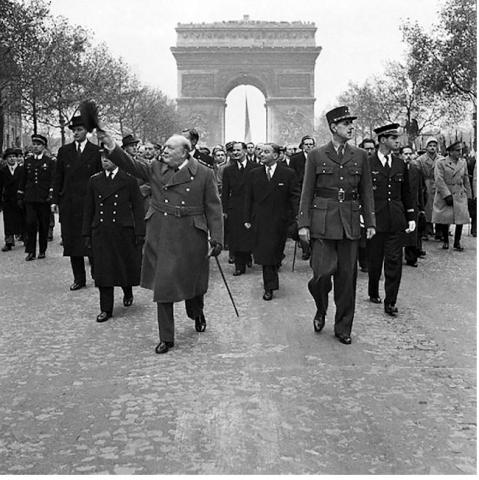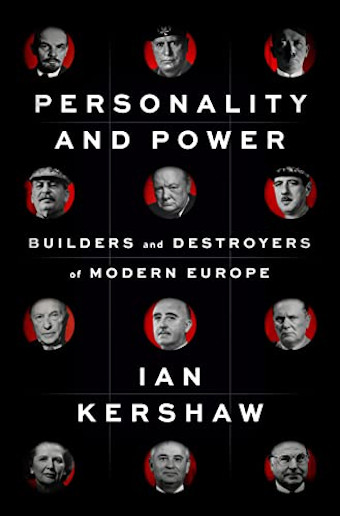Leaders Rise and Fall in Ian Kershaw’s ‘Personality and Power’

Personality and Power: Builders and Destroyers of Modern Europe
By Ian Kershaw
Penguin
492 pages
In his new book, Personality and Power, renowned historian Ian Kershaw provides a detailed study of leadership in Europe during the 20th century. Twelve leaders are profiled, including Vladimir Lenin, Josef Stalin, Adolf Hitler, Charles De Gaulle, and Winston Churchill, as well as a sole female leader, Margaret Thatcher.
Kershaw seeks to answer these questions: “Did these leaders ‘make’ Europe’s 20th century? Or were they made by it?”
Using secondary sources, he offers capsule biographies of each leader, noting that he hasn’t “undertaken primary research on any of these individuals, apart from Hitler.” This reliance on secondary sources sometimes results in a rather dry summary of events and the sense that he has unnecessarily boxed himself in.

Inscrutable Motives
Kershaw probably knows as much about Nazi Germany as anyone on the planet. He’s the author of a definitive two-volume biography of Hitler, as well as Making Friends with Hitler, a fascinating look at British aristocracy’s flirtation with Nazism during the 1930s.
It’s no wonder, then, that his chapter on the demented Führer is among the strongest in this book. As Kershaw rightly notes, Hitler “was the prime mover of the most fundamental collapse of civilization that modern history has witnessed … His colossal impact on European history during his era was second to none.”
At the same time, he’s oddly vague about the origins of personality traits in some of these leaders. Of Hitler, he writes: “It is impossible through the mists of time to establish what could have been so damaging to his self-esteem that it left such profound, all-consuming hatred in him.”
But, in many cases, research into these leaders is wide and deep. For example, numerous Hitler biographers—from Joachim Fest and John Toland to Alan Bullock and Volker Ullrich—have put forth plausible theories as to the dark origins of his personality that drove him to bloody conquest and unparalleled global carnage. Are such motives still so inscrutable?

What If?
From time to time, Kershaw can’t resist dipping into historical what-ifs: “Had [events] not done so, Lenin might have been no more than a footnote in history,” or, later in the same chapter, “History could have taken a different course had Trotsky complied with Lenin’s request.”
Counterfactual notions like this occur throughout the book, though they hold little value either as conjecture or informed speculation. Obviously, every aspect of history (and not just in Europe) might be radically different had such-and-such not gone the way it did.

‘Macabre Spectacle’
For the most part, however, Kershaw moves adroitly through decades of turmoil in Europe. He’s skilled at connecting 20th-century leaders with our current crop. Of Lenin’s embalmed corpse, still on display in the Kremlin nearly 100 years after his death, he writes:
“For President Putin, the continued macabre spectacle of the unburied corpse of Lenin is awkward. Lenin symbolized revolution. Putin emphasizes the stability he has established after the chaotic Yeltsin era. On the other hand, many Russians still admire the strength and prestige of the Soviet era. Removing Lenin from his mausoleum risks unleashing a new debate about the Russian past. Putin would presumably prefer to avoid that. So for now at least, Lenin stays where he is. His corpse in Red Square has lasted far longer than the Soviet system itself.”
Personality and Power presumes a certain level of familiarity with the individuals under study. At the same time, Kershaw’s undisputed knowledge and acumen notwithstanding, those well-informed readers might not find much that’s new or provocative in this book.

Author Bio:
Lee Polevoi, Highbrow Magazine’s chief book critic, is the author of two novels, The Moon in Deep Winter, and The Confessions of Gabriel Ash, forthcoming later this year.
For Highbrow Magazine
Image Sources:
--Levan Ramishvili (Flickr, Public Domain)
--Penguin
--Pingnews (Flickr, Public Domain)
--Segunda Guerra Mundial (Flickr, Public Domain)
--Mirek T (Wikimedia.org, Creative Commons)































































































































































































































































































































